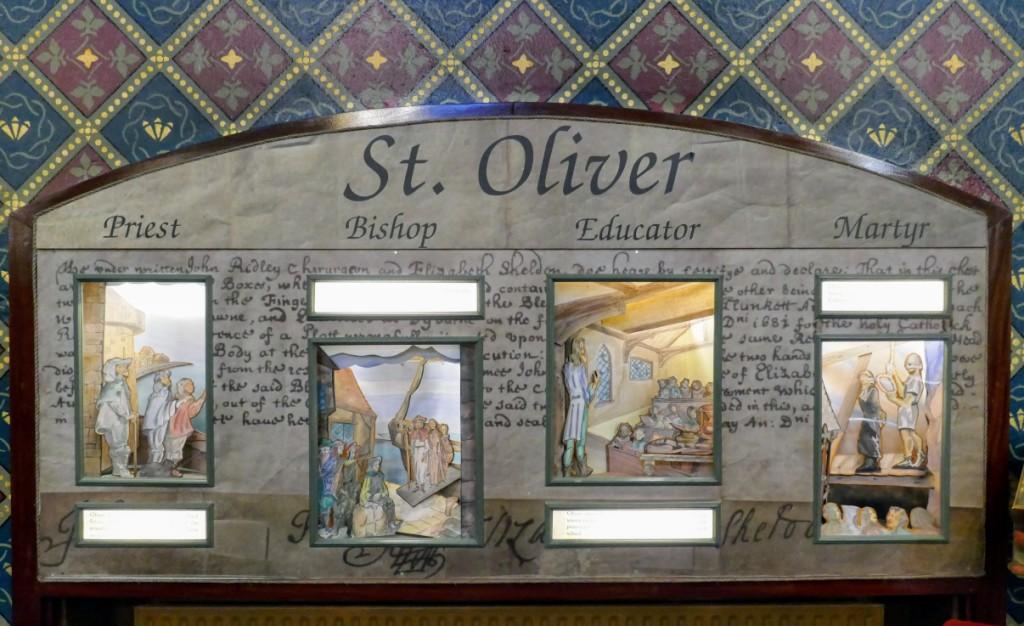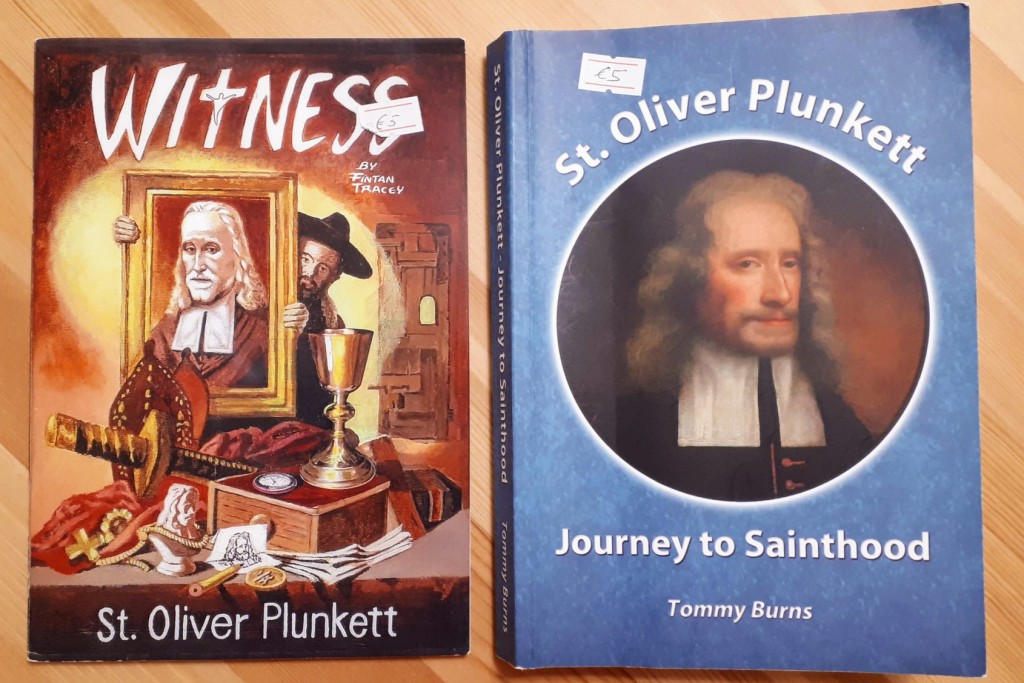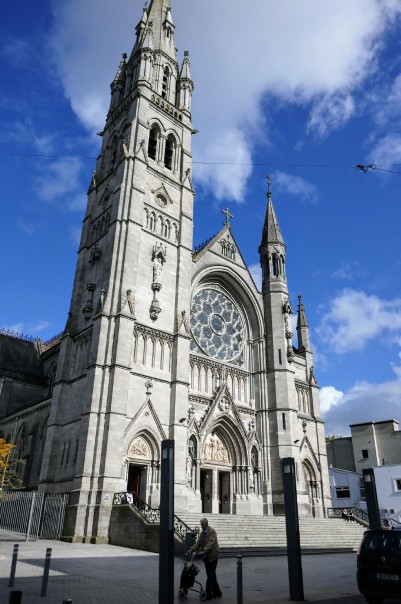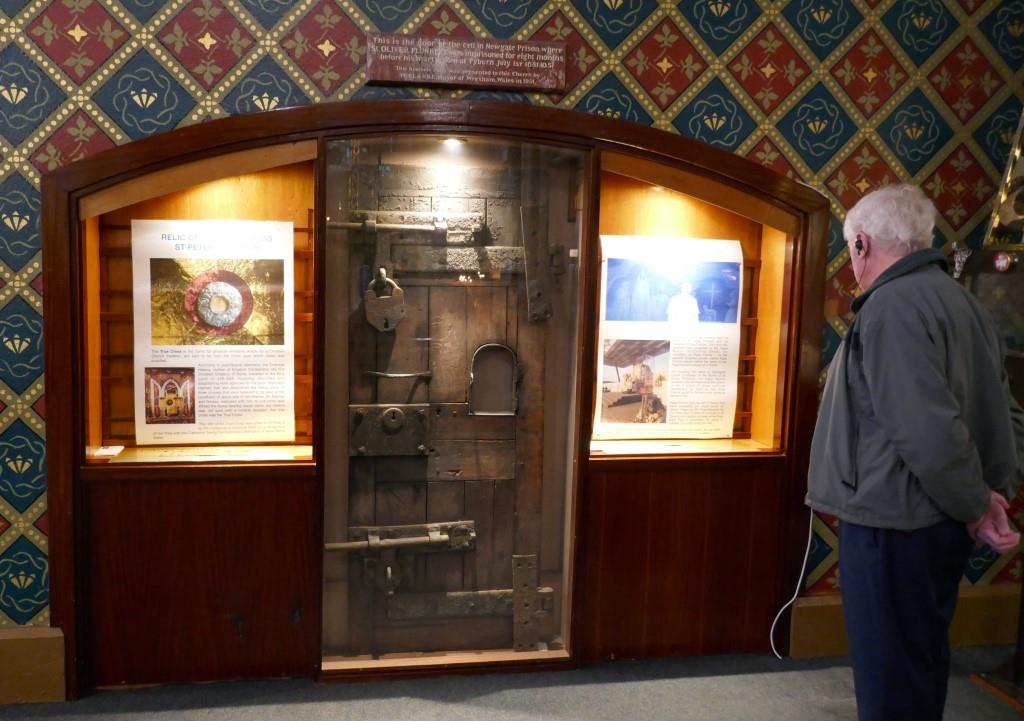The last “museum” in my 100 Museums Challenge is a very special one, as it’s the shrine of a saint.
In October 2019 I was lucky to tour Ireland in a group led by Stephen McPhilemy from Derry, Northern Ireland. On the day that we would go to Brú na Bóinne north of Dublin, Stephen told us how his family had regularly stopped at the nearby town of Drogheda on their way south. We would go there too, not just as a convenient lunch stop, but to see what had attracted Stephen’s family: St. Peter’s Church and the National Shrine of St. Oliver Plunkett.
Drogheda (pronounced DRAW-head-ah) was a town I’d noticed on the map for a peculiar reason. Fans of the 1983 TV miniseries The Thorn Birds will recognize Drogheda (pronounced Druh-GHEE-dah) as the name of the Australian outback sheep station where the Cleary family lived, named after the Irish town.
I found the unexpected side-trip to the shrine fascinating for two reasons: the relics and the London connection.
To set the scene, here’s a beautifully filmed short video from Visit (County) Louth, showing the town, the church, and the shrine.
I’d never heard of St. Oliver Plunkett (1625-1681) before, which may not be surprising as he is Ireland’s newest saint (and is overshadowed by St. Patrick, Ireland’s oldest saint). Here is a very brief introduction to his life and martyrdom.
Here is part of the exhibition in the church about the life of St. Oliver Plunkett which qualifies it (for my purposes, at least) as a museum.

The four dioramas are labelled as follows.
Priest
- Oliver leaving Ireland in 1647 with the Papal Envoy, Father Scarampi, to study for the priesthood in Rome. He was ordained Priest 1st January, 1654.
Bishop
- Oliver arrives back in Ireland as Bishop on 6th March 1670, to rebuild a broken church.
Educator
- Oliver opens his first school in July 1670 at Drogheda for young people and ordained priests, where both catholic and protestant are taught together. Ireland’s earliest integrated school.
Martyr
- Oliver executed at Tyburn in 1681, victim of a hostile English Parliament and martyr for the Catholic Faith.
My interest in holy relics and reliquaries may have something to do with being brought up as a Roman Catholic, with the mysticism that entails. Add in an art history degree, some travelling, plus a healthy dose of skepticism, and that’s about where I am.
The Church of St. Peter in Drogheda has a relic of the True Cross, gifted to the church by the Cathedral in Ghent in 2009. In addition, the church has on display the head of St. Oliver Plunkett, as shown in the first video at about 1:58 (I did not photograph this myself). As Tommy Burns notes in St. Oliver Plunkett: Journey to Sainthood (2019, p. 225):
My only point here is that it was astonishing to have the unexpected opportunity, in Ireland, to not only learn about someone executed at the infamous Tyburn gallows in London, but that he would be a saint, and that I would be in the presence of his well-preserved mortal remains over 300 years later.
As if that wasn’t enough, the church also has a very interesting historical relic on display (if you accept that it is authentic): the door of the cell in London’s Newgate Prison where St. Oliver Plunkett was imprisoned before his martyrdom at Tyburn on July 1, 1861.
I was very curious to attempt to learn more about the origin (provenance) of this door, which has a sign above saying that it was presented to the church by W. Clarke, Mayor of Wrexham, Wales, in 1951. Well, here is what Tommy Burns has to say on the subject (again from St. Oliver Plunkett: Journey to Sainthood, p. 246).
Next question: how ever did a door of the condemned cell of Newgate Prison, in use in 1681, come into the possession of Mayor W. (for William, a minimal amount of sleuthing tells me) Clarke’s family? I started to do some research thereon and quickly disappeared down a rabbit hole of London history. Something to follow up on some day.
Here are the two books I purchased at the Shrine that day:
Witness: St. Oliver Plunkett by Fintan Tracey, published by the author, Drogheda, Ireland, 2017, 52 pages, ISBN 978-1-5272-0889-6 (copies available at the National Shine for £5) — an excellent graphic novel of the life of the saint!
St. Oliver Plunkett: Journey to Sainthood by Tommy Burns, published by the author, Drogheda, Ireland, 2019, 308 pages, ISBN 978-1-78280-285-3

In conclusion, I certainly mused at the Shrine of St. Oliver Plunkett, and said a prayer too.

St. Peter’s Church, Drogheda: The Shrine of St. Oliver Plunkett is museum no. 102 in my #100museums challenge (see 100 Museums Challenge).
Here endeth my 100 Museums Challenge!

